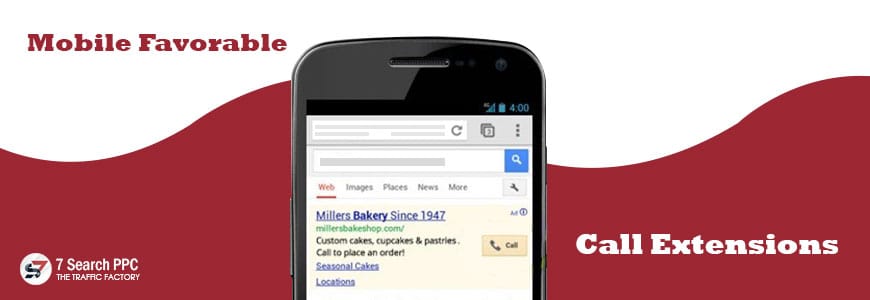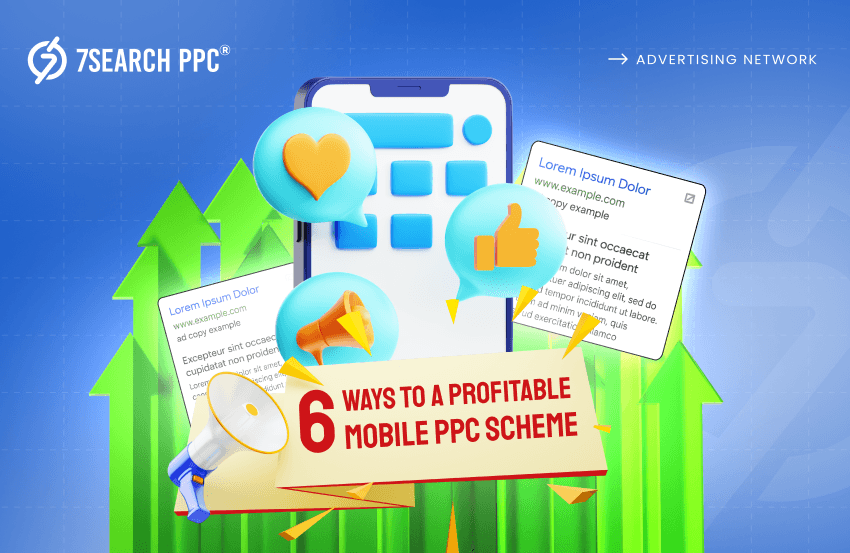Every PPC strategist said three years ago, this year is the year of mobiles. But it is no longer the year of mobile. It is the era of mobiles. The ever-expanding and one of the most significant segments of paid SEM traffic is mobile traffic. So now it’s time to take a new one. Pragmatic and actionable look at your mobile PPC strategy for expeditious wins and delayed capital upgrade projects.
There can be a low click and impression volume if you have taken no notice of mobile strategies in the past few years. They may be a hassle and bothersome, but if you don’t bother to go after this ever-increasing scheme, you won’t be able to save all the conversion rate optimization in the world.
Running a well-doing mobile PPC strategy is not as strenuous as you think. Just follow seven simple suggestions to get yourself on the right path to achieving success through mobile PPC.
Make Your Website Optimal For Mobiles
First of all, you need to optimize your website for a mobile environment if it is already not. Preferably today! People do not like visiting a webpage on their mobile PPC that requires them to zoom in or out even to read the primary text. Moreover, not a mentally stable person bothers to buy something from their mobile if the billing process is clumsy and hard to operate on a small screen.
This is the only element in this post that cannot be directly addressed within an ad platform such as AdWord. Nevertheless, it is a significant and useful recommendation. If you do not have a mobile-optimized site, your metrics are going to suffer, and the weighty money spent on mobile traffic will be misspent.
Keep Out Mobile Traffic in Display Campaigns
Display campaigns show poor performance on mobile devices. A person using the phone is most likely occupied with apps and will only fleetingly visit browsers to research or search for something.
Most users are annoyed when interrupted and taken out of the app they are enjoying using on their smartphone. So, it is a better idea to set a mobile bid modifier of -100% on the display campaigns you are orchestrating.
Remarketing is an exception to this. You can get dividends on mobile devices using remarketing. Mobile traffic in remarketing is so relevant, notably picked out, and in most cases already familiar to the user. Still, unless you have reason to justify, keep out mobile traffic from your display campaigns. (Reasonable arguments are welcomed in the comments section)
Device Bid Modifiers in Proportion to Conversion Metrics
Conversion metrics differ by device type. To compensate, you need to use bid modifiers for tablets and mobile devices. It will save you money on click and conversion costs.
Let’s see this through an example. Assume that you have a campaign that spent $1,000 in the last 30 days, in which $500 was spent on computers, $400 on mobile devices, and $100 on tablets.
You have had a total of 100 conversions in the last 30 days, which signifies that the average cost per acquisition (CPA) of your campaign is $10. Now, let us see the conversion volume by device type: computers acquired 75 conversions, mobile devices acquired 20 conversions, and tablets acquired five conversions.
Now, your conversion breakdown list will be like this:
- Mobile devices: Average CPA $20.00
- Computers: Average CPA $6.67
- Tablets: Average CPA $20.00
Have you noticed that the CPA for tablets and mobile devices is much higher than for computers? For context, you want to bid down on both tablets and mobile devices proportionally.
- Computers: 33 % (computer CPA is roughly 33% of computer CPA)
- Mobile Devices: 66% (computer CPA is roughly 33% of mobile CPA)
- Tablets: 76% (computer CPA is roughly 33% of tablet CPA)
Your campaign’s average CPA reduces accordingly after these bid modifiers are effective. However, conversion volume is one thing to keep an eye on.
For example, if you see your campaign’s CPA decreasing to $8, but your conversion volume reduces from 100 to 90, you need to make further adjustments to the bid modifiers to compensate for any more of this.
Deep-Link Final URLs inside Applications
It is a bit advanced suggestion applicable only to businesses that have mobile applications. You can deep-link text ads to a specific section of your mobile app if you want to re-engage with users who have your app downloaded on their phones via RLSA (remarketing lists for search ads) and even gear up a remarketing display campaign for mobile users.
When you deep link your ad to the most relevant content within your app, it will save your users’ time and annoyance. But first of all, ensure that your campaign ads utilizing deep linking appear on a tablet or mobile device. Do this by keeping your bids significantly low, such as $0.05 or $0.10, and put a significant positive bid modifier on your devices. Alternatively, you can eliminate computer traffic with a bid modifier of -100%.
Mobile Favorable Call Extensions
Having a support line is a boon! If you have it, people can call to make purchases or for help. Remember to use this phone number in a call extension for every suitable search campaign.
Make your call extension mobile preferred when creating it so that it has more chances to show up on mobile searches.

As a result, there will be a call button on SERP along with your text ad. This will allow the user to call you straight from the SERP instead of landing on another page.
This improves the conversion rate of business as an entire step the user had to follow before it was removed.
Think About Other Ad Extensions For Mobile PPC Scheme
You can use a good deal of ad extensions relevant to your business. Extensions like site links and callouts help improve your CTR and take up even more room at the top of SERP.
You could take up almost the entire screen and spectacularly increase your visibility if you can make your ad show in the top position for a mobile device and site link and callout extensions display beneath your ad.
In the first place, know that mobile PPC strategies and schemes need not be unduly complicated or enormous. If you spared no effort for your 7SearchPPC campaign to succeed in mobile PPC traffic, try these suggestions as you watch your performance outdo.
Despite putting the above-given schemes into practice, if you don’t see a significant lift in your metrics, maybe it’s high time to get a professional PPC audit.
If you have some additional and worth sharing tips for mobile PPC, please do share them with us in the comments section below!
Frequently Asked Questions (FAQs)
What are the 4 C’s of PPC?
Ans. The 4 C’s of PPC (Pay-Per-Click) refer to four key elements essential for successful online advertising campaigns:
- Content
- Creativity
- Keywords
- Conversion
In what ways would you make PPC more effective?
Ans. To enhance the effectiveness of PPC (Pay-Per-Click) campaigns, consider implementing the following strategies:
- Thorough Keyword Research
- Compelling Ad Copy
- Landing Page Optimization
- Ad Extensions
- Bid Management
- Ad Testing
- Audience Targeting
- Conversion Tracking
What is a call extension?
Ans. A call extension is a feature in online advertising, such as Google Ads or Microsoft Advertising, that allows advertisers to include their business phone number within their ad
What are the Advantages of call extensions?
Ans. The advantages of call extensions in online advertising include:
- Direct Engagement
- Increased Conversions
- Enhanced User Experience
- Measurable Results
- Local Engagement
- Mobile-Friendly
What is mobile PPC?
Ans. Mobile PPC, or mobile pay-per-click, refers to a digital advertising strategy where advertisers pay a fee each time their ads are clicked on mobile devices, such as smartphones and tablets.
















